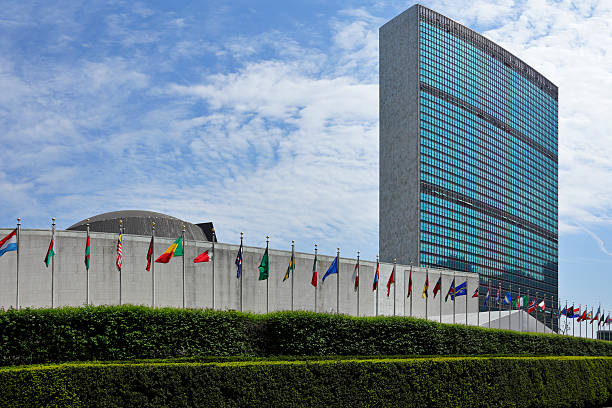UN Report Highlights Ongoing Terror Threat from ISIL in India and Afghanistan
UN Warns of Ongoing ISIL Threats in India and Afghanistan: Lone-Wolf Attacks and Regional Instability at the Forefront
The latest United Nations report has raised serious alarms over the persistent threat posed by the Islamic State (ISIL), also known as Da’esh, in India and Afghanistan. While the terror group has faced setbacks in its traditional methods of large-scale attacks, its influence continues to grow in the form of lone-wolf assaults, particularly in India. The report highlights the adaptability of ISIL, which remains resilient despite robust counter-terrorism measures globally.
ISIL’s Strategy in India: Promoting Lone-Wolf Attacks
The 35th report from the UN’s Analytical Support and Sanctions Monitoring Team underscores the continued threat of ISIL in India, where the group’s capacity for major attacks has been significantly diminished. However, its handlers, operating from remote areas, have shifted tactics, actively encouraging local sympathizers to carry out lone-wolf attacks.
The UN’s assessment reveals that ISIL’s Al-Jauhar Media, a prominent propaganda arm, continues to spread anti-India messages through its publication Serat ul-Haq. These messages are aimed at inciting violence through individuals acting independently of any larger organized network. While large-scale terrorist plots have been thwarted in India, the danger of sporadic, smaller attacks by radicalized individuals remains a major concern.
In this environment, authorities are increasingly vigilant, though local law enforcement faces challenges in preventing isolated attacks that can be inspired by online propaganda and communication between terrorists and their sympathizers.
ISIL-K: A Growing Threat from Afghanistan
The report also draws attention to the serious threat posed by ISIL-Khorasan Province (ISIL-K), the Afghan affiliate of ISIL. Despite the loss of significant territory and the depletion of leadership ranks, the terror group remains a powerful force in Afghanistan. ISIL-K has targeted ethnic minorities, including Hazara Muslims, and continues to engage in violence against the Taliban regime, UN personnel, and foreign nationals.
UN Secretary-General António Guterres warned that ISIL-K’s growing influence extends beyond Afghanistan, infiltrating other regions in Central and South Asia. The presence of ISIL-K recruits, particularly from Tajikistan, is a troubling sign that the group is cultivating international support and expanding its reach.
Afghanistan’s Role in Regional Instability
Despite the departure of US troops from Afghanistan and the Taliban’s return to power in 2021, the report stresses that the country remains a breeding ground for terrorism. More than two dozen active terrorist organizations, including ISIL-K, continue to operate from Afghanistan, threatening the country’s stability and the security of neighboring states.
The international community remains concerned about the potential of Afghanistan to again become a hotbed of terrorism, exporting instability to the region. Guterres called for global cooperation to prevent further deterioration in Afghanistan, urging nations to work together to tackle terrorism both within the country and beyond its borders.
The Global Response: Counter-Terrorism and International Cooperation
The UN’s calls for action emphasize the need for unified global efforts to combat ISIL and other terrorist organizations. The Secretary-General has repeatedly urged member states to strengthen their counter-terrorism initiatives, especially in light of the growing menace from groups like ISIL-K. According to the report, the impact of ISIL’s operations extends far beyond Afghanistan, with terrorist cells spreading throughout Central Asia, South Asia, and even reaching the broader Middle East.
The Future of Counter-Terrorism: Is the World Prepared?
As the world faces a shifting landscape in the fight against terrorism, the UN report serves as a stark reminder of the evolving tactics employed by groups like ISIL. While the loss of territory and leadership setbacks have weakened their operational capacity, their ability to inspire and incite violence remains undiminished. The key to countering this threat lies in not only combating terrorist cells but also addressing the underlying causes of radicalization.
Experts agree that a multi-pronged approach involving stronger intelligence-sharing, enhanced border security, and community engagement is crucial to curbing the spread of extremist ideologies. Moreover, countering online propaganda from groups like ISIL will require innovative methods and closer collaboration between governments, tech companies, and civil society.
Conclusion: A Persistent Global Threat
The 35th UN report underscores the reality that ISIL, despite setbacks, remains a serious threat, particularly in India and Afghanistan. With new tactics such as lone-wolf attacks gaining traction, the global community must remain vigilant in addressing these emerging challenges. While counter-terrorism efforts have been successful in limiting the group’s influence, the ongoing threat serves as a reminder that the fight against terrorism is far from over.
Governments worldwide must continue to work together, sharing intelligence and resources, to thwart the ambitions of terrorist groups like ISIL and ensure the safety and stability of both regional and global security.

